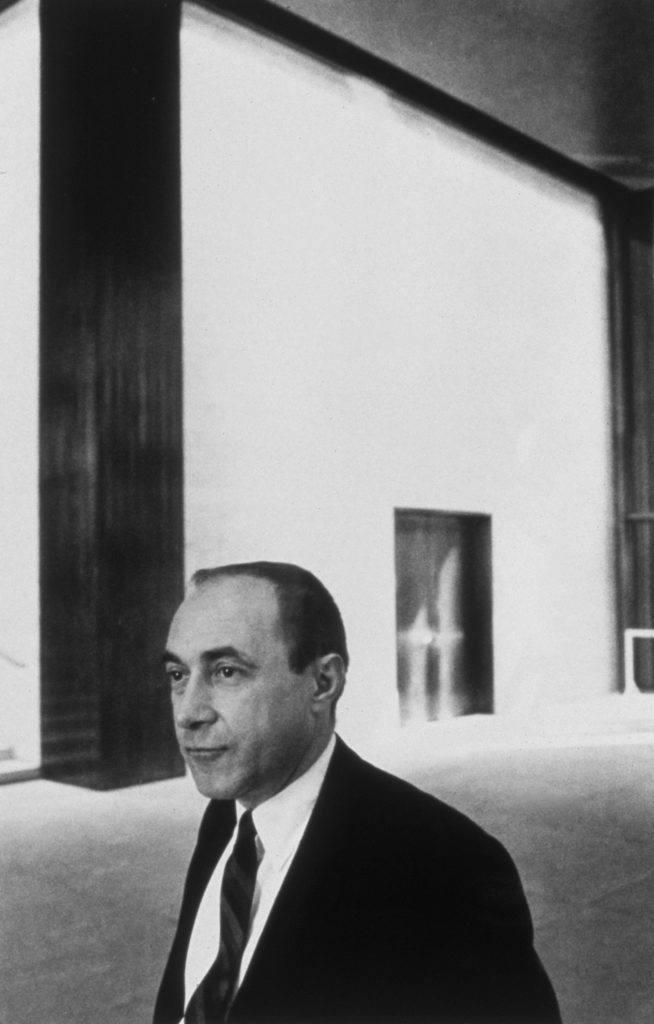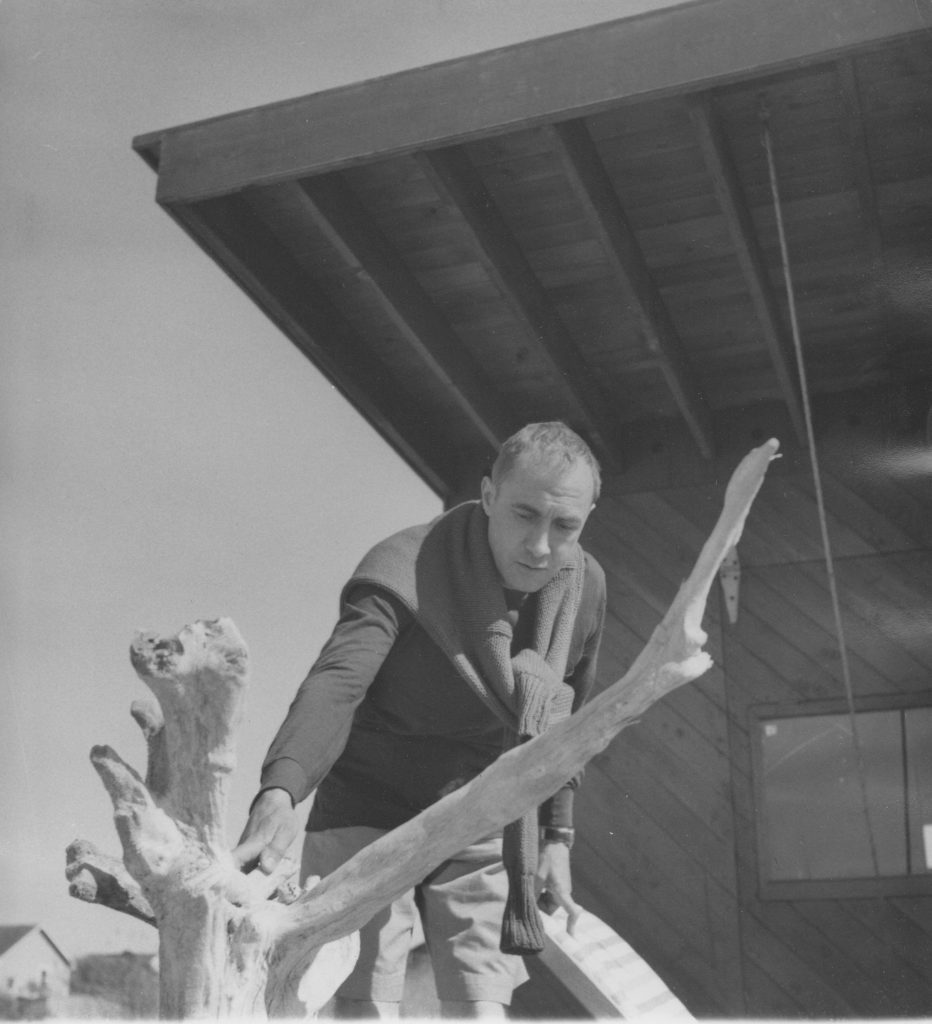ABOUT RICHARD KELLY
In the brief history of architectural lighting as a profession, Richard Kelly is widely recognized as one of its pioneers and great contributors. He collaborated on over 300 major projects including the Seagram Building, the Kimbell Art Museum, The Yale Center for British Art and Lincoln Center, all highlighted in this exhibition. As these landmarks broke new ground in architecture, so did Kelly’s lighting design.
Kelly’s passion for light developed at a young age, while his professional involvement with lighting was gradual. While he was majoring in science and English literature (and took all his electives in architecture) at Columbia University in New York, he also designed lighting fixtures for a local manufacturer. Soon after graduation in 1932 he opened an office, as he described, “for designing and selling lighting ideas and the equipment to make them work.”
Wartime restrictions having interrupted his design work, in 1942 Kelly returned to his studies, attending Yale University School of Architecture. There he studied with Stanley McCandless, a master of theatrical illumination. In addition to learning valuable theatrical lighting techniques, he assimilated McCandless’ ideas about light intensity, color, distribution and control, and their influence on human emotion. Kelly realized that light could be manipulated to create excitement or boredom, comfort or discomfort. Based on his understanding of “light energy impacts” he identified three types of light: focal glow or highlight, ambient luminescence or graded washes and the play of brilliants or sharp detail.
To Kelly, lighting was planning what we see and how we respond to it, and he felt strongly that the best way to achieve this was to develop the architectural and lighting schemes concurrently. The three types of light were a palette from which the designer could mix and compose to achieve the desired results. Although any one type of light could dominate, he considered the “order of imaginative planning” similar to the creation of a watercolor painting. “First, major highlights are imagined – then, graded washes of different luminosity are added and – then, the detail of minor lightplay makes the idea clear and entertains the eye.”
Richard Kelly’s philosophy and its application in practice, are a lasting legacy. Much of the lighting and lighting control equipment available today was initially developed in response to lighting solutions which Kelly identified.


